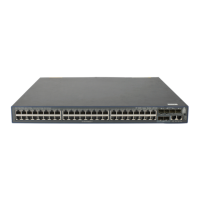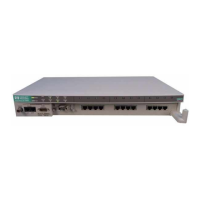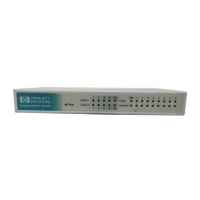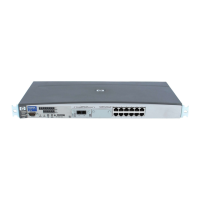415
As shown in Figure 94, configure FRR on Router B by using a routing policy to specify a backup next
hop. When the primary link fails, RIPng directs packets to the backup next hop. At the same time,
RIPng calculates the shortest path based on the new network topology. Then, the device forwards
packets over that path after network convergence.
Configuration restrictions and guidelines
RIPng FRR is available only when the state of the primary link (with Layer 3 interfaces staying
up) changes from bidirectional to unidirectional or down.
RIPng FRR is only effective for RIPng routes that are learned from directly connected
neighbors.
Equal-cost routes do not support RIPng FRR.
Configuration prerequisites
You must specify a next hop by using the apply ipv6 fast-reroute backup-interface command in a
routing policy and reference the routing policy for FRR. For more information about routing policy
configuration, see "Configuring routing policies."
Configuring RIPng FRR
1. Enter system view.
system-view
N/A
2. Enter RIPng view.
ripng
[ process-id ] [
vpn-instance
vpn-instance-name ]
N/A
3. Configure RIPng FRR.
fast-reroute route-policy
route-policy-name
By default, RIPng FRR is
disabled.
Enabling BFD for RIPng FRR
By default, RIPng FRR does not use BFD to detect primary link failures. To speed up RIPng
convergence, enable BFD single-hop echo detection for RIPng FRR to detect primary link failures.
To configure BFD for RIPng FRR:
1. Enter system view.
N/A
2. Configure the source IP
address of BFD echo
packets.
bfd echo-source-ipv6
ipv6-address
By default, the source IP address
of BFD echo packets is not
configured.
The source IP address cannot be
on the same network segment as
any local interface's IP address.
For more information about this
command, see High Availability
Command Reference.
3. Enter interface view.
interface
interface-type
interface-number
N/A
4. Enable BFD for RIPng FRR.
ripng primary-path-detect bfd
By default, BFD for RIPng FRR is
disabled.

